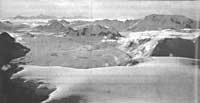Greenland. Mind of ice
1988/08/01 Iztueta, Josu Iturria: Elhuyar aldizkaria
50 days of absence and the thousands of hours lived in the ice will be difficult for me to gather in four or five pages.
Trying to make the dream come true
Since childhood he dreamed of distant lands. At school time, when I was bored, I really liked the friends next door, towns, rivers, mountains, etc. search where they were.
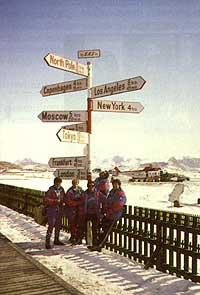
The arctic created a special attraction in me. It was a distant, cold and snowy territory in which man adapted to live. It also had the midnight sun. The truth is that, being young, I tried to satisfy curiosity.
Our first contact with Arktico was in the spring of 1984. It was an expedition made up of four people and we crossed Lapland ski. In a place formed by the territories of Sweden, Norway, Suomi and the Soviet Union, which are above the archaic polar circle, we traveled 600 km and after arriving in Greenland slightly affected (in good sense), other reasons have been those that have taken us to Greenland.
Fridtjof Nansen, a young Norwegian of only 27 years, crossed Greenland in 1888. At that time he spent two months of crossing 700 km and this experience opened the doors to other more daring expeditions. In Nans, doctor of philosophy, sage in zoology and oceanography, as well as poet and painter, he was awarded the Nobel Peace Prize in 1922. For the Norwegians it is still one of the greatest heroes.
This year it was 100 years and you already know that the most centenarians create some sentimental link: Those of Iparragirre in the Basques, those of Einsten in the scientists and those of Nansen in those of us.
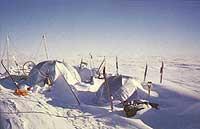
The dream, the excuse, the enthusiasm, the illusion...
Some expedition data
Even if so, we will briefly quote some data on the Greenland expedition:
Tour
Greenland, the largest island in the world, intended to cross the east coast to the west coast, from Annmassali to the village of Sondre Estromfiord. In total they are 650 km and the entire route is around the polar circle approximately.
Group
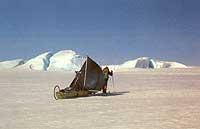
The team consists of five people, two women and three men. We knew well and there may be the key to things going well. From the beginning we saw that being good crew members and being physically well prepared was not the only secret. Staying more than a month without seeing in that white desert is a perfect laboratory for analyzing human behavior. We had no radio and were completely incommunicado. Nor could we send our news.
Anniversary
Spring is the best anniversary to do what we had to do, as it is possible to take advantage of many hours of light when the weather accompanies. When arriving on the west coast before the summer, the problems of river waters and glacier frosts are minor.
Material
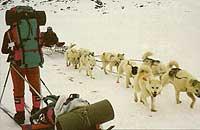
As we are a shearing background, we consider that when making the decision comes out quickly and quickly. We wanted to carry almost 400 kilos of weight with us, but the expedition was the lightest of recent years. Special suits, hot bags, isothermal shops, etc. are necessary when reaching temperatures of 30 and 40 degrees below zero. If we add wind to all this, the risk of freezing will not be low.
We have taken telemark skis, and although the snow has made use of those of us, it has been very useful.
Food and food
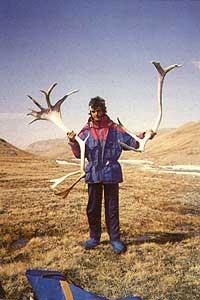
This section was of great importance on this occasion, as three reasons had to be taken into account:
- There is no possibility to feed all cruises (between 35 and 40 days).
- To the calories needed by the body to make an effort of 8 hours, are added the necessary to keep the temperature in cold. Our diet had about 3,600 calories and was enough to perform daily work, as body temperature can be maintained with the right clothing.
- Food accounted for 50% of the total baggage (about 200 kilos). The daily diet required one kilo per person (a few grams). We had a special diet called survival for bad weather days. We consumed 2,100 calories mixed in 600 grams of powder.
We had a study on dietetics and diet. Before, there and upon arrival, a medical team has investigated us. We have also performed special stress tests.
Photography
We carry two cameras (compact calls) and a reflex (with lenses 35-110). Because of the cold we had no big problems. To mention, and perhaps as a novelty, it would be to take it to the camcorder. Technically the cinema has been more used for the proper functioning of the celluloid and the mechanisms of the camera. The camcorder has not raised any problems (although many thought) and the photovoltaic plates that used sunlight to charge batteries as a source of energy have been very useful (we have been able to use enough energy, clean and economical).
Orientation
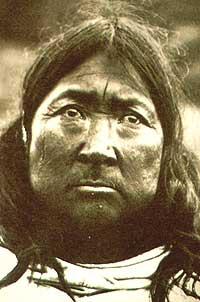
You can talk a lot about this, but we will only comment on two things. The lack of relief of its landscape makes it difficult to take references and therefore guess the correct direction.
- We used the compass. At that latitude, the geographic north pole and the magnetic north pole were closer to the point where we were, requiring further correction. As an example, the correction is around the 7th, with an average of 35º. This means that if our direction was 280° (almost west), in our compass we should follow 280 plus 35°, i.e. 315°.
- We knew where we were going, but how did we know how far we went? For this we created
a normal bicycle wheel, with a simple count-kilometer, of which cyclists use. - Knowing more or less at what point we were, how to confirm our latitude?
Sailors have long used the apparatus called sextant. Measuring the height of the sun at a certain time, you only have to rely on the number that comes out with a few simple operations.
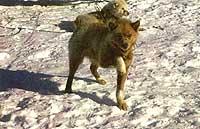
Although it may be interesting, let us leave the things that correspond directly to the expedition and I have chosen three names to explain certain curiosities: nuna, imak, inuit. You will soon understand why.
NUNA
The Eskimos call the land, which is covered with snow for almost all year. Greenland = "Green Land", but 85% of this island is covered with ice and snow, known as Inlandiss.
Let's compare the two frozen territories:
ANTARCTICA. It has 14,000,000 km2 and an average ice depth of 2,150 meters. If the ice melts, the sea water level would rise 55 meters.
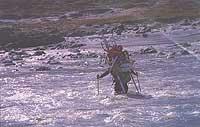
GREENLAND. With 1.650.000 km2 would be the small brother of the Antarctic, but the average thickness of ice is 2.242 meters and in some points reaches up to 3 km. In case of melting all the ice here, the marine waters would rise 6 meters.
When talking about icy territories, we will discuss a phenomenon known as albedo. The sun's radiations reach the ground, but the whiteness of snow and ice reflects them. Dry snow has a higher reflectance and the longer the length of the white element, the less radiation will absorb the soil. As a result, this place will have lower temperatures. This is not the only reason to explain the cold of the territories in which we move.
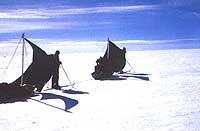
In it predominates above all an animal: the dwarf or the white bear. Despite being about to disappear for years, it is currently protected by special measures. Hunting can be done by local people, but each family will not exceed one per year.
Nano, more powerful than the rest of the animals, can be the man the only rival. You can walk hundreds of kilometers and many swimming. He owns those frozen lands.
When we started asking for permits to go to Greenland, the local government forced us to carry a rifle, but we were warned that the days before the departure we would not need... We were calm, but bear in mind that bear hunger can smell food at 5 kilometers. The real risk is only found on the coast and especially in the east.
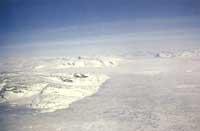
We have mentioned Nano and we cannot put aside the cringms (dog). If you consider the best friends of man all over the world, let's not say.
For the Eskimos the dog is the only non-wild animal. The archaic wolf is the anchor of today's dogs, where dogs are the only means of transport possible for many months. Even in the sea we will then talk, for 8 months dogs are the way they move. Each shot has between 8 and 10 dogs.
The dog spends his whole life outside and does not bark, a crying cry comes out to them. Dogs that do not marry the orders of the Eskimos are exhausted... and when Nano goes hunting, the fast dog knows that the bear will attack him with the left arm... We were in the village of Anmassali, the largest town in the east with its 2,000 inhabitants, there are about 4,000 dogs and you can hear as many histories as dogs.
IMAK
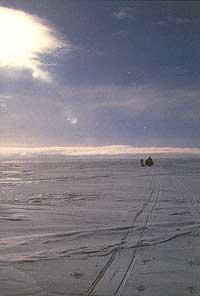
The sea, in a few months of the year, has been for centuries the only source of food for many Eskimos. During the summer they have used as a means of transport the boat called kayak. This tool of bone, wood and leather has not changed shape in today's society, but of materials. They also used boats called Umiak when they had to go group fishing. Today, motorized boats are in the hands of many families.
When talking about the sea as a place of residence we must talk about the so-called puise seal. This has been and is the only way of life for many families. She has been hunted with different techniques. Three unused rifles are:
- In winter they open several holes to breathe between the ice. The Eskimos put a bird's feather on the water and when the puise goes up to breathe, it moves quickly so that the Eskimo becomes aware. Then they put on harpoons and kill.
- In summer the kayas surround him with a boat and throw a harpoon. It is often invented at 30 meters.
- Towards spring, when the seals are sunbathing on the ice, they approach the lying eskimo and making gestures and sounds similar to the seal until hunting.
INUIT
But who are the human beings who have survived for thousands of years in such harsh conditions? They are unusual. The word inuit means that the only men and women who lived in the world for centuries were themselves. The name Eskimo is from the Indians and means "raw meat food".
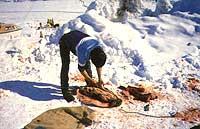
Inuit people living along the Arctic (110,000 in total, of which 59,000 in Greenland) have owned a similar culture. The Eskimos of Alaska and Greenland speak the same language, although they have different dialects. Until the arrival of the white man was not written and the eastern dialect of Greenland has not yet been written.
They have a really complex language. One name has many times the meaning of the long phrase, a root can encompass up to 14 suffixes... Numbers are much simpler. Until recently, only up to 20 on the bull (20 numbers formed by fingers and toes). From there, it was eleven... When I read these kinds of things and have returned home from the lands of Greenland, it has taken me a great sadness. His admirable survival capacity has been changing. Ancient culture and modern civilization have caught him in the middle... Now, in writing these last lines, I have read in the book ahead that our way of life will change, but we will decide when and we will do it our way. A spokesman for the Inuit people spoke to the Canadian authorities. I am afraid. I would like to believe, but I cannot, because I am only qadlunat (white man).
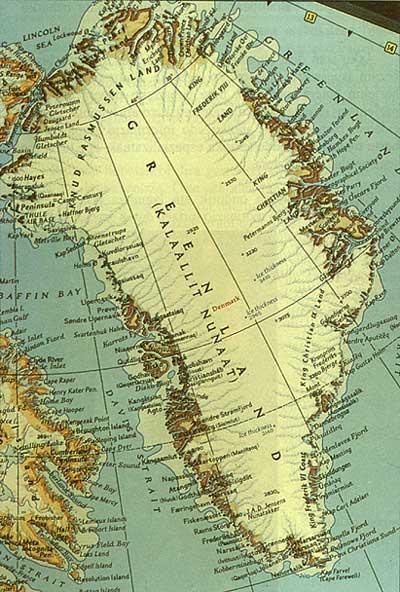

Pingasunngornermi
sisamanngornermiluKitaani Avannaanilu sila
issaasannerulissaaq.Kujataaniit anorsarissiartussaaq.Qulisimasaq
ilaanni apisarluni.Kujaataani
sissaasannerussasaasilasilicaqi, tilisunisqui.

Gai honi buruzko eduki gehiago
Elhuyarrek garatutako teknologia





